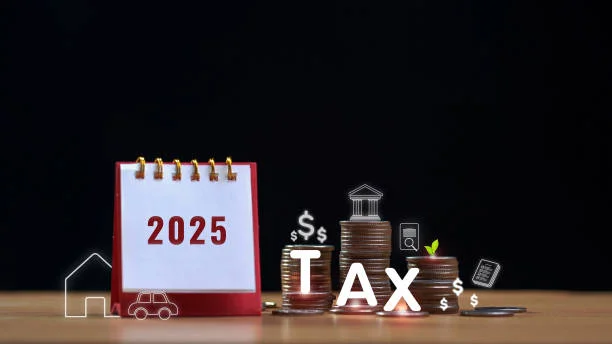The landscape of the R&D Tax Incentive is undergoing significant changes in 2025, presenting both new opportunities and compliance challenges for businesses. The recently enacted One Big Beautiful Bill (OBBB) has reshaped key provisions, making it crucial for companies to stay informed and adapt their strategies. This post provides a comprehensive overview of what’s new with the R&D Tax Incentive in 2025 and what your business needs to know to maximize its benefits.
Understanding the R&D Tax Incentive: A Brief Overview
The R&D Tax Incentive is a valuable, government-sponsored tax credit designed to encourage innovation and technological advancement within the United States. It provides a dollar-for-dollar reduction in a company’s tax liability for qualifying research and development activities. The primary purpose of the incentive is to reward businesses for investing in activities that lead to new or improved products, processes, software, formulas, or inventions. Contrary to a common misconception, the R&D Tax Incentive is not limited to companies with dedicated laboratories and scientists in white coats. A wide range of industries, including manufacturing, software development, engineering, and even food and beverage, can qualify by demonstrating that they have engaged in activities to solve technical challenges and improve their offerings [3].
Major Changes to the R&D Tax Incentive in 2025
The OBBB, signed into law on July 4, 2025, has introduced several critical updates to the R&D Tax Incentive. These changes primarily revolve around the treatment of R&D expenses, with different rules for domestic and foreign activities.
Restoration of Immediate Expensing for Domestic R&D Costs
One of the most significant changes is the restoration of immediate expensing for domestic R&D costs. Starting January 1, 2025, businesses can once again fully deduct their domestic R&D expenses in the year they are incurred [1]. This reverses a provision from the 2017 Tax Cuts and Jobs Act (TCJA) that, beginning in 2022, required businesses to capitalize these expenses and amortize them over five years. The return to immediate expensing provides a substantial cash flow benefit and simplifies tax planning for innovative companies.
Treatment of Foreign R&D Expenses
It is important to note that the new rules for immediate expensing apply only to domestic R&D activities. For foreign-based research, the requirement to capitalize and amortize expenses remains in effect. Businesses must continue to amortize their foreign R&D costs over a 15-year period [1]. This distinction underscores the U.S. government’s focus on incentivizing domestic innovation.
Accelerated Amortization Options for Prior Years
For businesses that capitalized R&D expenses between 2022 and 2024, the new law provides two options for accelerating the amortization of the remaining balances. Companies can either deduct 100% of the remaining amortization in 2025 or split it evenly, with 50% in 2025 and 50% in 2026 [1]. This offers flexibility for businesses to choose the approach that best aligns with their financial strategy and tax position.
Enhanced IRS Documentation and Reporting Requirements
While the OBBB brings welcome changes, it also comes with increased scrutiny from the IRS. As of 2025, businesses claiming the R&D Tax Incentive will face more stringent documentation and reporting requirements.
New Section G Reporting Mandates
For tax years beginning in 2025, businesses with over $1.5 million in Qualified Research Expenses (QREs) will be required to provide detailed project-level information on Section G of Form 6765, Credit for Increasing Research Activities [4]. This new mandate is intended to provide the IRS with greater visibility into the nature of the research being conducted and to ensure that claims are well-substantiated.
Business Component Breakdown Requirements
In addition to the new Section G reporting, all businesses claiming the R&D Tax Incentive must now break down their expenses by business component. This means linking costs to specific products, processes, software, or other components that were developed or improved. As KLR, a professional services firm, notes, “Companies must now break down expenses by business component, linking costs to specific products, processes, or software developments” [4]. This requirement necessitates more precise tracking and documentation of R&D activities.
Who Qualifies for the R&D Tax Incentive?
The eligibility criteria for the R&D Tax Incentive are broad, but there are specific rules for different types of businesses and activities.
Eligible Small Business Rules
For the 2025 tax year, a business is considered an “eligible small business” if its average annual gross receipts for the three prior taxable years are $31 million or less [1]. These businesses may be able to take advantage of special provisions, including the ability to apply the R&D Tax Incentive against their payroll tax liability. Furthermore, eligible small businesses that did not claim the credit in prior years may have the opportunity to amend their returns for 2022-2024 and claim refunds [2].
Qualifying Activities and Expenditures
As previously mentioned, a wide range of activities can qualify for the R&D Tax Incentive. According to KBKG, a tax consulting firm, qualifying activities can include everything from developing or engineering a new product to beta testing and improving manufacturing processes [3]. The key is that the activity must be undertaken for the purpose of discovering information that is technological in nature and intended to be useful in the development of a new or improved business component. Qualifying expenditures generally fall into four categories: wages for employees involved in R&D, supplies used in the R&D process, costs for computer time-sharing (such as cloud hosting), and expenses for contract research [3].
Strategic Opportunities for Businesses
The recent changes to the R&D Tax Incentive create several strategic opportunities for businesses to maximize their tax savings and improve their cash flow.
Retroactive Claims and Amendments
Eligible small businesses that may have been discouraged from claiming the R&D Tax Incentive due to the previous amortization rules should now revisit their eligibility for the 2022-2024 tax years. Amending prior-year returns to claim the credit could result in significant refunds. As noted by SVA Certified Public Accountants, “Smaller companies (under $31 million in revenue) can amend previous returns and potentially claim refunds on taxes paid” [2].
Action Steps: What Businesses Need to Do Now
To navigate the new landscape of the R&D Tax Incentive effectively, businesses should take the following steps:
•Update R&D tracking and documentation systems: Ensure that your systems are capable of capturing expenses at the business component level and providing the detailed project-level information required for the new Section G reporting.
•Review past returns for amendment opportunities: If you are an eligible small business, work with a tax advisor to determine if you can benefit from amending your 2022-2024 returns.
•Coordinate across departments: Foster collaboration between your tax, finance, and R&D teams to ensure that all qualifying activities are identified and properly documented.
•Engage experienced R&D tax credit specialists: The rules and documentation requirements for the R&D Tax Incentive are complex. Partnering with a specialist can help you navigate the process, minimize audit risk, and ensure that you are maximizing your credit.
•Prepare for potential IRS audits: With the increased scrutiny from the IRS, it is more important than ever to have robust documentation to support your R&D Tax Incentive claims.
By taking these proactive steps, your business can successfully navigate the changes to the R&D Tax Incentive in 2025 and continue to leverage this valuable incentive to fuel innovation and growth.






